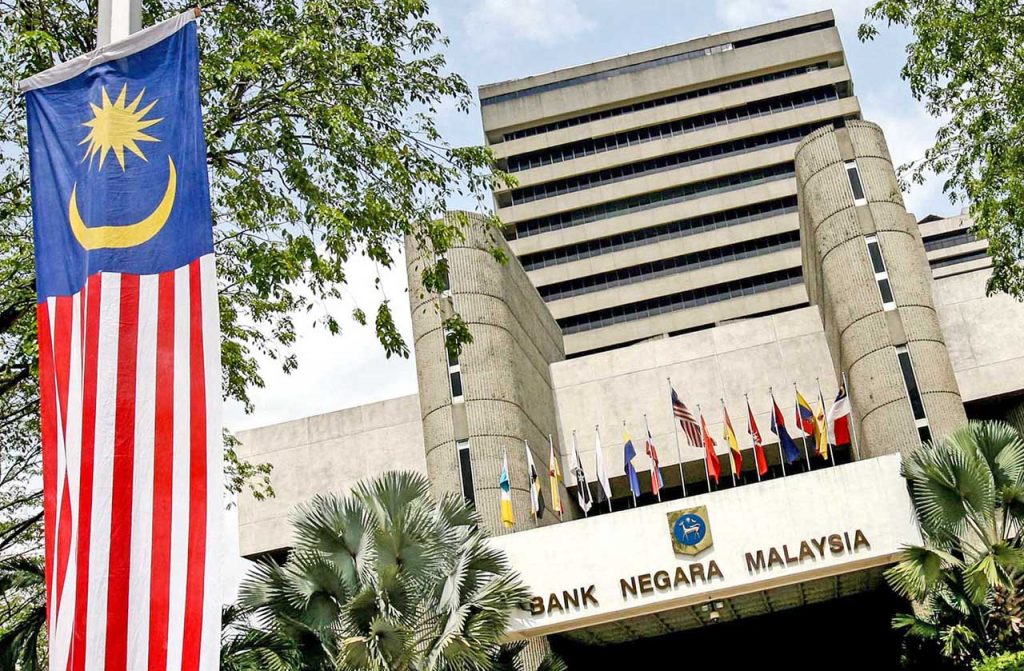
RHB Research viewed that the monetary conditions in Malaysia will be loosened further as downside risks to growth increases with an expected decline in GDP for the next three quarters of 2021. — AFP photo
KUCHING: RHB Research Sdn Bhd (RHB Research) assessed that there is a higher probability of a 25 basis points (bps) overnight policy rate (OPR) cut by Bank Negara (BNM) at the March 4 monetary policy committee (MPC) meeting given the current Covid-19-plagued monetary conditions in Malaysia.
In a recent report, it believed that monetary conditions in Malaysia will be loosened further as downside risks to growth increases with an expected decline in GDP for the next three quarters of 2021.
“In our view, with GDP likely to contract by a third straight quarter in the first quarter of 2021 (1Q21), the cyclically adjusted fiscal stimulus likely to be weak in 1Q21, the output gap remaining wide, credit conditions tightening in the construction, property, and SME sectors, the central bank’s policy stance will turn quite dovish on March 4.
“To address the aforementioned tight credit conditions in some sectors, we believe the central bank will also announce sector specific polices in 1Q21.
“These policies could include an extension of loan moratoriums beyond June 2020. Further relief measures for SMEs could also be announced.
“We also maintain our view that the balance of risks is tilted towards another 25 bps OPR cut in 2Q21,” it said.
It noted that BNM continues to provide targeted repayment assistance in which the public can request for an extension of the loan moratorium or a reduction in instalments.
“So far the facility has a 95 per cent approval for a sample of 1.4 mn applicants. In addition BNM also has a Targeted Relief and Recovery Facility (TRRF) for SMEs.
“The fund was increased by another RM2 billion recently, which has culminated in a total of RM4 billion in financing support for SMEs from TRRF.
“The take-up rate for the initial RM2 billion facility was 90 per cent. The additional RM2 billion TRRF was recently announced so it has not been utilised yet,” it added.
On Malaysia’s economic prospects, RHB Research expected 1Q21 GDP to contract by 2.6 per cent y-o-y versus a decline of 3.4 per cent in 4Q20 and the 3Q20 GDP print of 2.6 per cent decline.
“Consumer spending and public infrastructure spending will continue to weaken in 1Q21. The contraction in GDP in 4Q20 is likely to continue in 1Q21 as the imposition of the lockdown measures continue to affect private consumption and investment,” it explained.
While the MCO 2.0 were eased recently (by allowing nearly all of the economic sectors to operate), the research team pointed out that the requirement for compliance remains tight.
“In 4Q20, private consumption contracted by 3.4 per cent y-o-y versus 2.1 per cent decline in 3Q20 and is likely to remain weak in 1Q21.
“We see ongoing restriction, especially limited mobility to continue to suppress tourism-related activities including retail and accommodation.
“Data-wise, retail sales continued to fall in December at two per cent y-o-y versus November’s reading of 2.3 per cent decline despite the ease of restrictions during the month.
“With measures being tighter in January and February this year, the contraction in retail is likely to be larger in these months and 1Q21 as a whole,” RHB Research opined.
As for the investment scene in Malaysia, it said, the forward looking view on investment spending is of continued softness in 1Q21, with private and public infrastructure spending likely to remain soft.
“In terms of private investment spending, we notice that the pace of construction sector activity slowed in 4Q20 and we expect this trend to continue since access to credit is tightening to some extent.
“In the property sector, credit conditions for home loans could remain tight in 1Q21 and could result in delays in new project launches. On the manufacturing front, with the exception of the electrical & electronics along with the auto sector, capacity utilisation rates are low.
“These dynamics will restrain a pick-up in fixed investment spending in the manufacturing sector in 1Q21.
“On the public infrastructure investment spending front, we don’t find much evidence of new mega projects gaining any momentum in 1H21 and much of the activity in this sector will stem from continuing past projects,” it explained.
On a more positive note, in terms of levels of GDP, it said, Malaysia would not likely see a return to pre-pandemic output levels in the near-term.
The post ‘Higher probability of OPR cut at next MPC meeting’ appeared first on Borneo Post Online.

